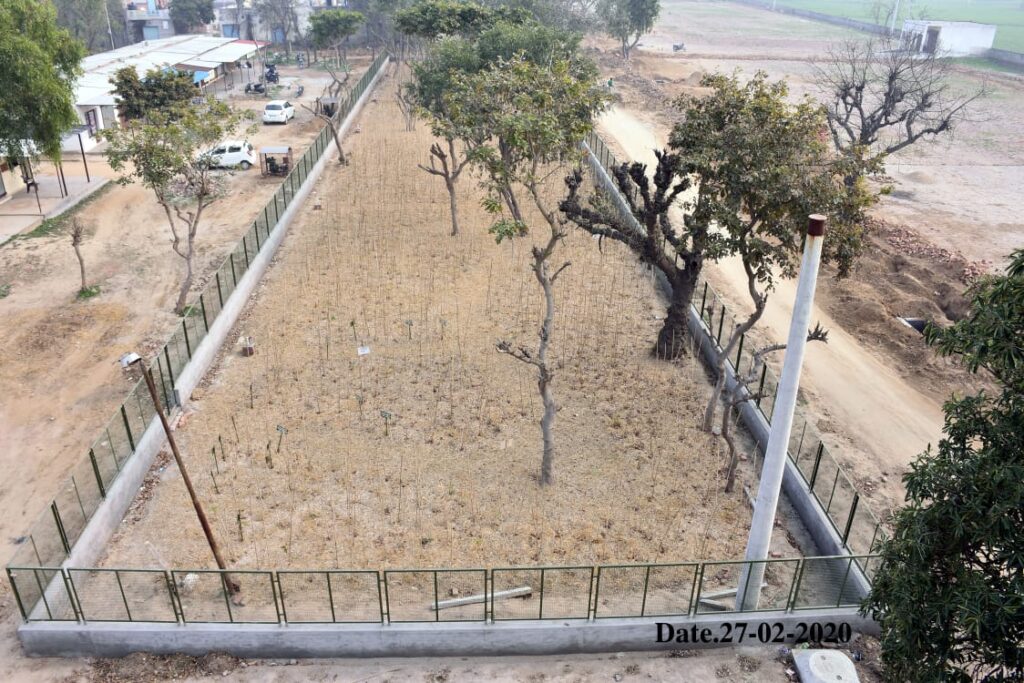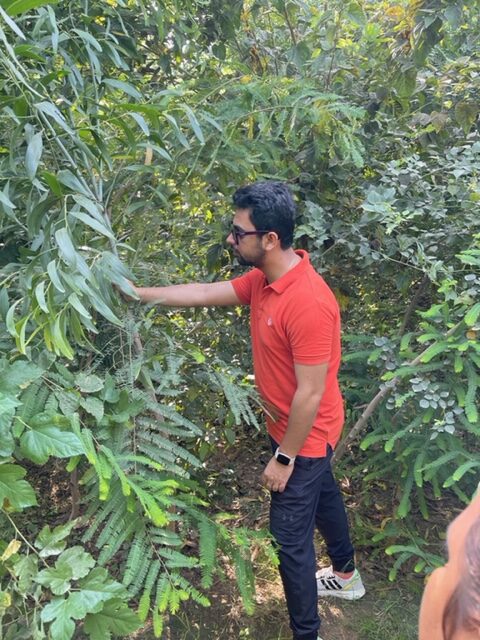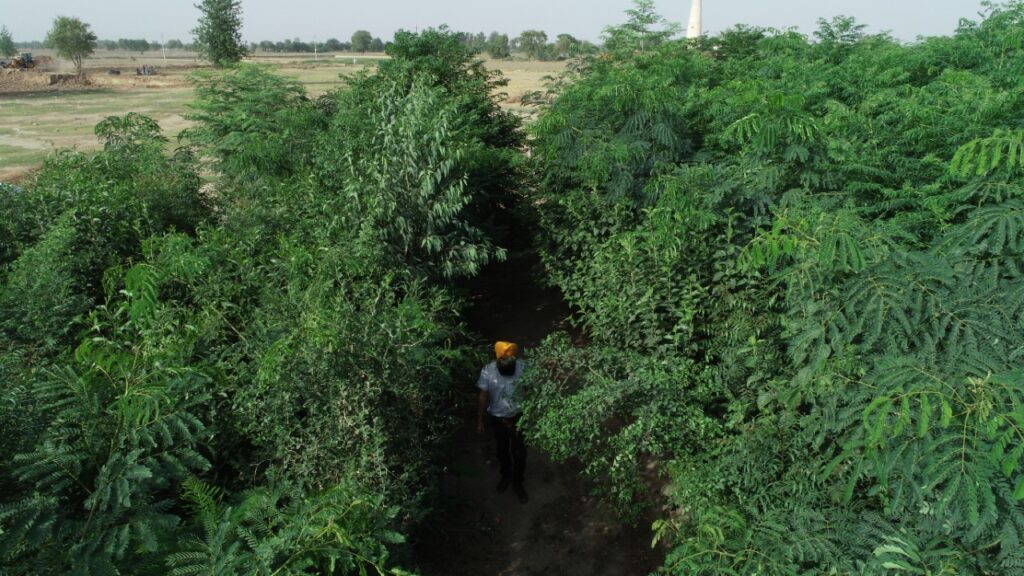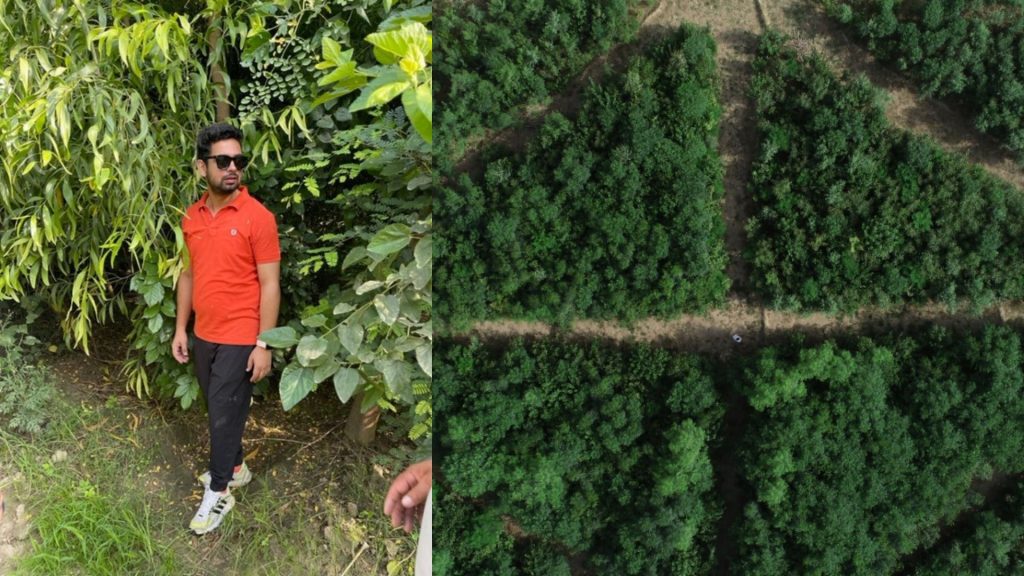The Miyawaki method that was introduced by a Japanese botanist in 1980s has now become a very common approach for people to develop a forest in India. This includes bureaucrats also, who are proactive in planting trees.
A young IAS officer from Punjab has been actively following the technique and has managed to grow more than 40 forests in the state in just three years. Mr. Sagar Setia, a 2017-batch officer, is optimistic about the Miyawaki technique that accelerates forest development by constructing soil, utilising native plant diversity, growing healthy saplings, and planting them close together.
HOW IT STARTED
Mr. Setia cleared the UPSC exam in 2016 by scoring a stellar AIR 66. After completing the foundation course and all other activities before the first individual posting, he was allotted the Punjab cadre and was posted as SDM Payal in Ludhiana district.
He was a nature lover and wanted this interest to help people in a bigger cause. While speaking to Indian Masterminds, he said, “During my posting in Ludhiana, I got to know about an NGO which was using the same technique to grow a forest in an area. We got in touch with them as we had a space in our administrative block in Payal subdivision. On 31 December, 2019, an ideal time for plantation, we started the afforestation drive of around 2000 saplings in two canals.”

While adopting the Miyawaki method, the officer along with the NGO started the plantation of a combination of trees which included the local varieties, shrubs, canopy trees, herbal trees, and others which are on the verge of extinction. The main idea was to develop a native forest through these local variety of trees. Mr. Setia said, “This was the first one we started as an experiment and kept monitoring on a regular basis. The experiment turned out to be a success, as after six months, we could see tremendous results and a potential to take this initiative to the next level. The initiative got a boost after the first rains and the survival rate was around 90 percent, out of which 75 percent were fully grown.”
Not only this, the officer was amazed to the see the biodiversity it created and how it became a home to many beautiful birds and other creatures.
REPLICATING THE TECHNIQUE
Mr. Setia soon got transferred to Mansa district which is bordering Haryana and has three tehsils, Mansa, Budhlada, and Sardulgarh. Here also, he started developing a forest. He said, “The district has a different kind of soil which is adequate to plant trees like Anjeer which are planted in a very low water retaining soil. I wanted to take up the technique in this district too and experiment on this soil. Firstly, we scaled the technique to a one-acre land and were successful. We wanted to create a forest which people can access, and, hence, we designed it in a way so that we can create a park inside the forest with all local varieties of trees, including medicinal and herbal plants.”

After initiating the first project in Mansa, he developed two more forests in the same district.
MY VILLAGE MY FOREST
Mr. Setia was then posted to Fazilka district as he got promoted to the rank of ADC. He served there from May to October 2021 in his first tenure, where he started with 25 nurseries as an integrated project so as to have adequate number of plants to create a forest through Miyawaki. As Fazilka has a soil cover of desert soil, it makes it even more challenging to take up such an initiative of increasing the forest cover. Both projects were taken up on a one-acre land and were funded by MGNREGA.

After some time, he was again transferred back to Fazilka during the elections as ADC. This time, when he returned back, he launched a project by the name of ‘My Village, My Forest’. The project was initiated with the vision to plant accessible forests in 75 villages of the district, aiming to increase forest cover and improve biodiversity, nurture ecology, and enhance the quality of life of the citizens. This project has been taken in line with 75 years Amrit Mahotsav celebrations.

The goal of 33% overall forest cover has been set by the Government of India. Whilst Punjab trails substantially with a forest cover of 3.69%, Fazilka, with less than 2% of FAI, has its task cut out.
The project aims at adding at least 75 acres of accessible small forests spread across the district, plantation of around 8000-10,000 trees of local varieties in each of the 75 villages, novel use of MGNREGA in nurturing greenery while providing 70,000 of mandays employment, and active participation and celebration of Azadi ka Amrit Mahotsav by the panchayats, youth clubs, citizens and civil society to make it a sustainable and successful initiative.
The officer along with other member have developed 40 forests under this project and are working on completing the target within a short time. As he has now been posted again in Firozpur, he remains in touch with DC Fazilka, Himanshu Aggarwal, who is looking into the project now.

































